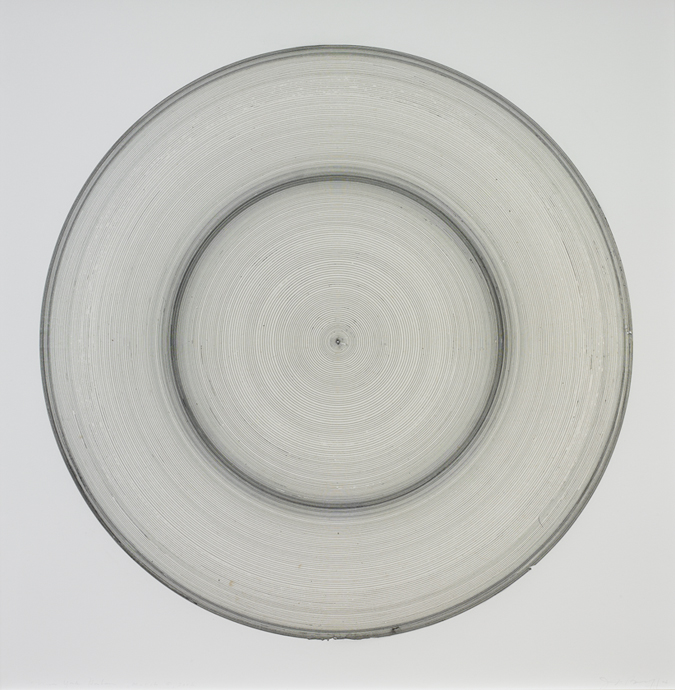
Is there anything quite so mesmerizing as the rhythmic, repetitive ebb, flow, ebb, flow of waves? When you stand on the edge of the ocean and look out over the shore it is difficult not to get lost in looking, just looking, at the endless motion of the water. It pulls you in. Absorbs your focus. This feeling of complete transfixion is reminiscent of hypnosis. The lure of the waves recalls those spiral circles, a cliché of the hypnotic method, which are forever spinning and captivating our eye, becoming the sole focus of attention.
Although Jill Baroff’s Untitled (Tide Drawing) from 2006 does not purport to induce a hypnotic state, the rings of circles are inextricably linked to the ocean waves. Her starting point is something much less aesthetically riveting, but equally fascinating: tide tables. Baroff takes from the Internet numeric information related to the tide levels at a specific location and within a precise timeframe; she then translates this data into circular forms. The distances between the lines refer to recorded changes in the water level at six-minute intervals. These negative spaces are therefore rife with information and meaning. Moving from the innermost circle outwards, the entire composition visualizes the constantly transforming water level over the course of two to three days.
Baroff uses a compass to draw these precise circles and convey exact measurements. Fittingly, her tool of choice is a precision drawing pen, commonly used for highly technical drawings like maps. What appears to be a dense band of ink from afar is revealed up close to be a series of minute fine lines, impossibly close to each other and yet not touching. The mind boggles at the difficulty involved in drawing lines at such close proximity to one another. But these are also irregular lines. While the overall shape of each circle is the same, the quality of the delineating lines is not. There are jumps and breaks in some places and build-ups of ink in others. This variability also imparts meaning. Ocean waves have the strange quality of being simultaneously identical – the inevitable ebb and flow of water coming into shore – and unique. As with two lines of ink, the form and motion of two waves are never the same.
Having spent a significant amount of time in Japan, Baroff’s choice of materials and conceptual outlook is often informed by Japanese practices. Her preferred paper is gampi. Although it is diaphanous in appearance and feel, it provides a durable surface for drawing. Once the drawing is complete, the paper is immersed in water as part of the mounting process. Although it is tempting to draw parallels between this physical submersion and the tidal themes of Baroff’s drawings, the artist has striven to eliminate any obvious associations with water. Over time Baroff has ceased using blue ink in her tide drawings and has replaced it with black, red, and sometimes yellow or green. Her focus on the ocean is significant, but it does not tell the entire narrative.
Just like the hypnotist’s circle or the movement of waves, Untitled (Tide Drawing) has a captivating quality. It is easy to get lost among the lines and to feel entranced by their visual pull. Even though the drawing captures a specific set of moments in time and place, it also, perhaps paradoxically, retains a sense of being entirely timeless. It embodies a place where time no longer follows a linear path. Like the rotation of the earth, the wax and wane of the moon, and the changing tides, the looping circles are suggestive of a cyclical, and therefore infinite, progression of time. The evocation of this endlessness is precisely what allows viewers to lose themselves among the many rings.
Jill Baroff Biography
Sarah Zabrodski Biography